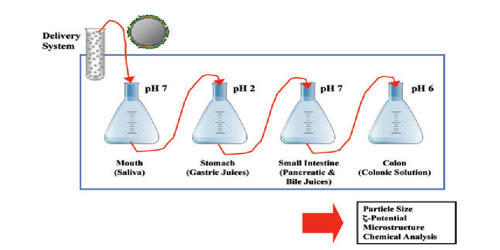Designing Competitive Strategies
Companies can be divided into market leaders, market challengers, market followers, and market nichers depending on their share of the total market. Each position has its own strengths and weaknesses and its own competitive advantages and disadvantages.
Market-leader strategies
Grameen phone is the market leader in Bangladesh with 43% of the total market. It’s not always easy being number one. First, there’s always someone trying to take place. Second, customers like familiarity, but they also like change. Market leaders have to work hard to keep their image fresh, to be perceived as up to date and relevant to contemporary consumers.
In recent years, Grameen Phone has seen its market share slip as competitors have chipped away at particular segments. In response, GP has devised a three-part strategy. It is going to try to expand the total market, defend its current market share, and find ways to increase its market share. It will be your job to help GP achieve these goals.
Expanding the total market
Companies can expand the total market by finding new users for their products, by finding new uses for their products, or by getting their customers or more usage to use their product more. Which of these choices seems most appropriate for GP? How would go about expanding the total market for GP?
Defending market share
GP & Aktel is constantly under attack by Banglalink. It can never allow its guard to slip. In fact, its managers have put together a tactical guide for dealing with competitors that looks more like a battle plan than a business plan. Here are some of the options they recommend:
- Position Defense. Build a strong defense around Grameen Phone’s territory.
- Flank Defense. Construct outposts to protect weak positions or to serve as bases for counterattacks.
- Counteroffensive Defense. Counterattack when GP is attacked.
- Mobile Defense. Expand into new territories than can serve as bases for attack or defense.
- Contraction Defense. Plan strategic retreats.
How might GP use each of these alternatives? Are GP’S managers justified in using such an aggressive metaphor for their plans? Is competition really war?
Expanding market share
Of course, GP wants to do more than merely defend what it has. It wants to grow. However, it needs to be careful. Increased market share does not, by itself, translate into increased profits. If GP gets too big, it might find itself in Banglalink’s position, which is the subject of an anti-trust suit. It might also be the case that consumers who haven not bought GP’s products would be prohibitively expensive to convert. Think about it. What would least favorite automobile company have to do to win you as a customer? Would it be worthwhile for that company to pursue the customer? Finally, companies that pursue market share at all costs sometimes lose track of other important considerations. Customer can’t buy service. Customer need to earn it. The best way to keep and expand service is to remember what got you to the top in the first place.
Market-challenger strategies
GP handheld computer company, Banglalink & Aktel, is a market challenger. GP launched Banglalink after seeing two of its competitors successfully enter the handheld mobile communication market. At present, Banglalink has 25% of the market. The market leader Date-Ah! A subsidiary of Plus-Minus, has 50% of the market (i.e. Market Leader). In the past, Date-Ah! Was the most innovative company in the industry? However, with size has come stagnation. Elite Systems, specializing in handheld mobile communication market for financial analysts, has 20% of the total market (i.e. Market Follower). The remaining 5% of the market is split between a numbers of smaller firms offering inferior products at cut-rate prices (i.e. Market Nichers).
Given what you know about Banglalink’s position, what should Banglalink try to do? Should it attack Date-Ah! (i.e. It can attack the Market Leader) or Elite Systems (i.e. It can attack firms of its own size)? Should it try to squeeze the small firms out of the industry (i.e. It can attack small, local and regional firms)? Once Einstein chooses its targets, should it go for a frontal assault or try a less direct method of attack? What specific actions can it take to improve its position?
Choosing a general attack strategy
- Frontal Attack: Cutting price, convincing the market that the brand is equal in quality but a better value than higher priced brands. Example: Banglalink, Warid.
- Flank Attack: When the opponent is strongest then the attacker finds the ways of weak spots to attack. In this method, the attacker can attack geographically and segmental. The company can attack where the opponent is under-performing or can serve the uncovered markets. Example: GP.
- Encirclement Attack: When the attacker attacks the opponent from various sides and simultaneously to capture a wide slice of the enemy’s territory. Example: Aktel, City Cell.
- Bypass Attack: It means bypassing the main enemy and attacking easier markets to broaden one’s resource base. Bypass attack also includes diversifying into unrelated products and/or markets. Example: City Cell, Teletalk.
- Guerrilla Attack: This is small, intermittent attack to harass and demoralize the opponents and secure a permanent foothold. It includes selective price cuts, intense promotional campaign and occasional legal actions. Example: Banglalink, Aktel.
Market-follower strategies
Aktel & Teletalk is plagued by market followers. Its managers are always complaining about how they do all the work, only to find their best ideas copied by others. Some of these competitors are worse than others. Some imitate Aktel’s products but maintain their own distinct company identity (Imitators). Others start with the products Teletalk develops and adapt them to fit specific market niches (Adapters). However, there are companies that simply clone Aktel’s products, right down to the design of their packaging (Cloners). There are even companies that duplicate and sell Banglalink products in Black Markets through disreputable outlets (counterfeiter).
Market-Nicher strategies
City Cell is the scientific instruments company, CDMA technology, is a master of niche marketing. Generally, the products it develops have no use outside of the niche market but have tremendous value within the niche market. For example, it has a number of products designed to be used in specific kinds of surgical procedures.
CDMA technology has been successful as a niche marketer because it is always on the lookout for under-served or emerging niche markets. To this end, its marketers have developed a network of contacts among its customers. CDMA technology keeps in constant communication with these customers, asking them what their needs are, where they see room for improvement in CDMA technology’s products, and where they see their professions going in the future. RIM succeeds not because it settles into a niche, but because it anticipates the next niche market opportunity.
The following Specialist roles are open to Nichers:
- End-user Specialist: The firm specializes in serving one type of end-use customer for example a reseller who plays a specialist role in the market in providing services to a specific type of consumer by adding convenient technology.
- Vertical level Specialist: In which the firm specializes in producing raw materials / parts / finished products / distribution in Acquiring to Distribution chain.
- Customer Size Specialist: The firm can concentrates in selling products to small, medium or large size customers.
- Specific Customer Specialist: The firm limits its selling to one or few customers.
- Geographic Specialist: The firm can sell its products to a certain locality, region.
- Product/Product Line Specialist: The firm becomes specialize in producing a specific product or product line.
- Product Feature Specialist: The Company specializes in producing a special type (feature/benefit) of product.
- Job-shop Specialist: The firm customizes its products for individual customers.
- Quality-Price Specialist: The firm can operate at a high or low – quality or price ends. i.e. high quality – high price or low quality – low price.
- Service Specialist: The firm specializes in providing one or more unique services.
- Channel Specialist: The firm specializes to reach to its consumers only through a specific channel of distribution. For example: If a soft drink Co. decides to sell the drinks only at the premises of the universities.
















